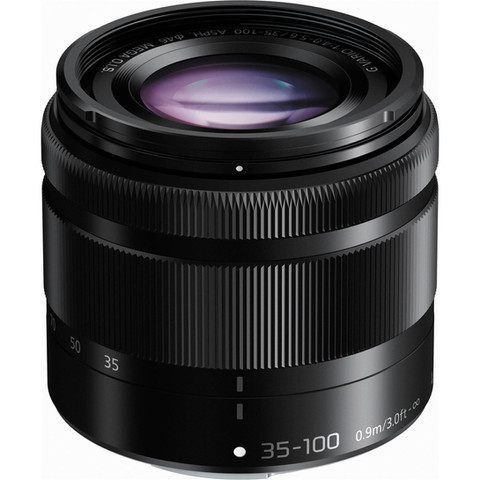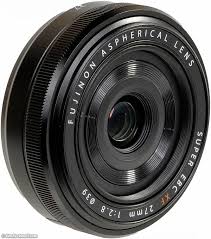Best camera lenses for cycling
- Team escapar
- Jul 13, 2020
- 9 min read
Updated: Jul 15, 2020
We've already covered how to carry a camera on your bike and what cameras we'd recommend. so here we're going to cover off lenses. There are obviously many different camera systems and lenses of varying for local lengths and zoom ranges for each system. Here we'll focus on the key focal lengths and uses for the main systems we've recommended.
Firstly, this doesn't cover full frame DSLR Canon or Nikon lenses as we don't recommend riding with DSLRs. That doesn't mean you can't, but we choose not too and think there are tools better suited to the job on a road bike. The recommendations here try to strike a balance between size, weight and performance. We won't recommend a 135mm F2 Prime! We do however have focus more on smaller and wider lenses, which we've found we use on the bike to capture landscapes and environmental portraits.
Note on weather-sealing: if your camera body is not weather-sealed, there's less value in buying a weather sealed (usually more expensive) lens.
1) Ultra Wide Angle Lens (Prime lens <24mm)
Most kit zooms supplied with cameras tend to start at the 24mm Focal Length (Full frame equivalent /FFE) and wide angle zooms are typically 16-35mm or 14-28 FFE. If you want to shoot wider than this you many need a small (many are large) wide angle prime and options are limited on crop sensor cameras. Contenders
Laowa 7.5mm F2 - (for Panasonic & Olympus) Laowa 9mm F2.8 - (for Fuji, Panasonic & Olympus) Fuji Zeiss Touit 12mm F2.8
Fuji Samyang 12mm F2
Fuji Laowa 9mm F2.8
Fuj 14mm F2.8 Sony Zeiss Loxia 21mm F2.8 (weather sealed)
Sony Samyang 18mm F2.8
Sony Tamron 20mm F2.8m (weather sealed)
Sony Zeiss Batis 18mm F2.8 (weather sealed)
Ricoh GR: Wide Angle 21mm Adapter With an ultra-wide angle lens, virtually everything will be in focus once the aperture starts to close down, so we do recommend considering manual focus lenses, as they're often tiny and used as a secondary lens in conjunction with a wide angle or standard lens, so may be worth having in the bag for that vast landscape shot.
Focal Length: On the bike we find the sweet-spot to be 21mm, which gives us a little more coverage to capture landscapes and wider environmental portraits with cyclists in shot, without being super-wide. Best Lens: if the absolute best image quality is important, the Zeiss Loxia 21mm stands out. Most portable: The Laowa 7.5mm F2 is a remarkably tiny fantastic performer
2) Wide Angle Lens (Prime 24-35mm) We've not selected the Panasonic 12mm 1.4 ,Fuji 16mm 1.4 and Sony 24 1.4 GM, which whilst some of the best lenses for each system and weather sealed, are also quite large in comparison to alternative options. That said, if you already own one, or only plan to buy one lens at that length and use it regularly off the bike, it would be hard to recommend against them if you have space in your bag.
Contenders:
Panasonic 15mm F1.7
Olympus 17mm F1.8
Fuji 16mm F2.8 (weather sealed)
Fuji XF23mm F2 (weather sealed)
Fuji XC23mm F2
Sony Tamron 24mm F2.8m (weather sealed)
Sony Zeiss Batis 25mm F2 (weather sealed)
Sony 28mm F2 Sony Tamron 35mm F2.8m (weather sealed)
Sony FE 35mm F1.8 (weather sealed)
Ricoh GR3: Comes with a fixed 28mm lens
Focal Length: On the bike we find the sweet-spot to be around 28-30mm to give us more room than a 35mm. It makes for a good pairing with a longer (more than 50mm) standard or short telephoto lens (55-85mm). If this was our primary lens, we'd be tempted to be pair it with something wider than 18mm too,
Best Lens: if the absolute best image quality is important, the Zeiss 25mm stands out.
Most portable: The Panasonic 15mm F1.7 is a remarkably small fantastic performer.
3) Standard Lens (Prime 40-60mm)
'Nifty-fifty' options and similar length lenses abound on every system and can be small, cheap and good quality. However, we've also highlighted premium options, as 50mm 1.4 and 1.8 can still be compact and offer better quality and weather sealing. They're often cheaper than premium lenses at other focal lengths too. On the bike, we find they work well for landscape, equipment and more intimate group and people shots than simply using wide lens all of the time to cram everything into the frame.
Contenders
Panasonic 25mm F1.4 (weather sealed)
Olympus 25mm F1.8,
Sigma DC DN 30mm F1.4
Fuji XF35 F2 (weather sealed)
Fuji XC35 F2
Fuji XC35 F1.4
Sony Zeiss 55mm F1.8 (weather sealed)
Sony mount - Samyang 45mm F1.8
Sony mount - Sigma 45mm F2.8 (weather sealed)
Focal Length: We like to go long and find 55-60mm gives us more room to shoot full body shots of riders a little further away. If we pack our 60mm we'll often not to take a telephoto or portrait lens.
Best Lens: if the absolute best image quality is important, the Zeiss 55mm F1.8 stands out. Most portable: The Fuji XC 35 F2 is cheap, small and a stellar performer.
4) Telephoto or Portrait lens (>75mm)
Choice of compact full frame telephoto lenses is, by definition, limited. They are typically longer and heavier and start to become impractical to consider using on the bike. At these focal lengths, small manual focus lenses offer a more compact solution. However, we've not included them here are they're mostly for advanced photographers and can be difficult to use. This is where crop sensor camera's from Olympus and Panasonic have a distinct size and weight advantage over APS-C and Full Frame cameras. Many photographers will own an 85mm lens already and the full frame options are typically amongst the sharpest lenses you can buy. They're not usually bought for size, but rather image quality and we've therefore focused on the smaller options, but listed two 85mm for completeness that we'd not hesitate to use off the bike. Contenders
Panasonic 42.5 mm F1.7
Olympus 45mm F1.8 Sigma 56mm F1.4 (weather sealed)
Fuji XF 50mm F2 (weather sealed)
Sony Samyang 75mm F1.8
Larger options:
Fuji 56mm 1.2 (weather sealed) Sony 85 F1.8 (weather sealed)
Sony Zeiss Batis 85mm F1.8 (weather sealed)
Focal Lengths: given the size constraints and likely more limited 'second or third lens' usage scenario on the bike, we'd be happy with most focal lengths, in a small and sharp package, even it meant duplicating a focal length already in your bag (likely bigger, faster or on a zoom). Going long might negate the need to carry a long telephoto zoom,
Best Lens: if the absolute best image quality is important, the Sigma 56 F1.4 stands out.
Most Portable: The Olympus 45mm F1.8 is good value, small and a stellar performer.
5) Wide Zoom (16-35mm or 14-28mm)
Wide angle zoom lenses are often massive, especially those with faster apertures of F2.8. If you're using a bag on the bike, you may be tempted with slower F4 zooms to save carrying multiple primes. A one camera one, one zoom lens solution could work for 95% of your cycling photography requirements. Again, crop sensors have a size advantage here. On full frame, we opt for small prime over a zoom.
Contenders Panasonic 8-18mm F2.8-4 (weather sealed)
Fuji XC15-45mm F3.5-5.6
Larger Options:
Olympus 7-14mm F2.8 Pro (weather sealed)
Tamron 17-28 F2.8 (weather sealed)
Fuji XF 10-24mm F4
Sony Zeiss 16-35mm F4 (weather sealed)

Best Lens: if fantastic all round performance and image quality is important, the Panasonic 8-18mm is a great bike friendly option.
Most portable: The small Fuji XC15-45 lens is often provided in a kit with cameras and is one of the smallest of its type across any system. It just squeezes on to this list courtesy of its 15mm wide end.
6) Standard Zoom
Whilst potentially smaller than some of the wide-angle options, good zooms are often large and crop sensor camera's again have a size and weight advantage. Choice of small full frame zoom lenses is limited. However, you are rewarded with fantastic performance on some of the larger models, but for most cyclist photographers a large zoom is not likely to be the preferred choice and we'd choose a prime over a standard zoom. A weather sealed body with a weather sealed premium zoom, does offer a compelling one lens solution if you're happy to carry it.
Contenders
Panasonic 12-35mm F2.8 (weather sealed)
Olympus 12-45mm F4 (weather sealed)
Fuji X: XC16-50mm
Fuji XF 18-55 F2.8-4
Sony FE 28-75 3.5 5.6
Larger Options:
Sony Tamron 28-75 F2.8 (weather sealed)
Fuji XF 16-55 F2.8 (weather sealed)
Sony FE: Sony 24-105mm F4 (weather sealed)
Panasonic 12-60mm F2.8-4 (weather sealed)
Best Lens: if fantastic all round performance, compact size and image quality is important, the Panasonic 12-35mm is a great option.
Most portable: The small and cheap Fuji XC16-50 lens is often provided in a kit with cameras and is one of the smallest of its type across any system.
7) Telephoto Zoom
Often the biggest lenses and not something we'd recommend in full frame for cycling Even the Fuji APS-C lenses are marginal for cycling use, when you consider you're likely to use a wide angle and standard lens for the majority of shots.
Contenders
Panasonic 35-100mm F4-5.6
Panasonic 35-100 F2.8 (weather sealed)
Fuji XF 55-200mm F3.5-4.8
Sony FE: None recommended Larger Options:
Olympus 12-100mm F4 (weather sealed)
Best Lens: The Olympus 12-100 F4 is a one lens solution that covers everything apart from the ultra-wide end, but it may be all you ever need.
Most portable: The Panasonic 35-100 F4-5.6 is an incredibly tiny zoom with great image quality. We'd use to complement something wider and keep it in the bag until needed.
8) Pancake Lenses Will perhaps give you smallest camera setup possible in the system of your choice. We've opted for prime rather than collapsible Power Zoom style lenses for the best image quality. Contenders
Panasonic 20mm F1.7
Fuji 18mm F2
Fuji 27mm F2.8
Sony 35mm F2.8 (weather sealed)
Best Lens if fantastic all round performance, size and image quality is important, the Sony 35mm in an incredibly small option for the system.
Summing up
We've highlighted a range of lenses at various price points and your mileage may vary with regards to use of any one particular lens when on the bike. There's something to be said for keeping the setup minimal, compact and simple. Sometimes your priority may be the riding the bike, sometimes it may be taking photos, but it's possible to balance both and bringing the right along kit may improve your photography and not impact riding your bike.
We've not recommended Sony APS-C lenses, partly to avoid confusion, but primarily because there are small FE options that work well on cameras like the A6400 and provide a future upgrade path. Generally, the Sigma DC DN range of lenses would be our recommendation for Sony APS-C cameras.
Our recommendation for building a light weight cycling or hiking camera and lens kit
Many photographers aspire to build a collection of Professional F2.8 Zooms, the so called 'Holy Trinity' of wide, standard and telephotos, in addition to fast F1.4 primes with very shallow depth of field for blurry back ground shots. These lenses are bigger than 'enthusiast' grade F4 zooms and F1.8-F2.8 primes, so building a light weight kit is therefore a compromise between speed, flexibility and weight not to mention cost.
Fortunately, many of today's F1.8 to F2.8 prime lenses and F4 zooms are fantastic, good enough for professional purposes and certainly good enough for the kind landscape, environmental portrait and reportage style photography you might want to do on a road bike.
"We recommend having at least one combination of lens and favoured focal length, that's small and compact and makes you want to take it on the bike with you, rather than leaving it at home. If you've got that one small combination, there is then often room to squeeze in at least one or more (possibly bigger) lenses into your bag, which can cover your other needs"
Example Kit suggestion based on our camera recommendations:
For the discrete Fuji shooter
A non weather sealed two lens setup: Fuji X-E3 Camera - Fuji 18mm F2 + Fuji XC33mm F2 + use crop modes
For the Panasonic wide landscape shooter
A non weather-sealed 3 lens setup: Panasonic GX9 Camera - Laowa 7.5mm + Panasonic 15mm F1.7 + Panasonic 42.5 F1.7
For the discrete Olympus shooter
A compact non weather sealed 2 lens setup
Olympus E-M10 Mk III - Olympus 17mm F1.8 + Olympus 45mm F1.8
For the pixel peeping Panasonic shooter A premium Panasonic weather-sealed setup Panasonic G9 Camera - Panasonic 8-18mm + 25mm F1.4 + Panasonic 35-100 F2.8
For the no-expense spared Sony shooter A premium Sony Zeiss weather-sealed 3 lens setup
Sony A7RIII Camera - Batis 18mm + Zeiss 25mm + Zeiss 55mm
For the little and larger lens Sony shooter
A premium compact Sony weather-sealed 2 lens setup
Sony A7III - Zeiss 35mm F2.8 + Sony 55mm F1.8
For the budget savvy Sony shooter A compact Sony non weather sealed 3 lens setup setup
Sony A7III - Samyang 18mm F2.8 + Samyang 45mm 1.8 + Samyang 75mm F1.8
Let us know what you use or what kit you'd would love to try.
Notes
For those unfamiliar with crop factors and focal lengths Simply multiply Fuji focal lengths by 1.5x to get the Full Frame Equivalent
Simply multiply Panasonic & Olympus focal lengths by 2x to get the Full Frame Equivalent
Eg. The Laowa 7.5mm lens is the focal length equivalent of a 15mm lens in the Sony system and the Fuji 33mm is the equivalent of 50mm lens in the Sony system
For those unfamiliar with aperture and lens ''speed': an F1.4 has a bigger aperture that lets in more light in than an F1.8, which in turn lets more light in than an F2.8. It is said to be faster, because more light means you can use a faster shutter speed for the same exposure.
If you want thorough lens reviews, we recommend the following sites:
Sony FE Lenses - https://phillipreeve.net/blog
All brands - https://www.photographyblog.com/
Lots of all around info http://sdp.io/
Other sites we'd recommend would be Camera Labs and ephotozine, Youtube and instagram @jamespopsys @geraldundone































Comentarios